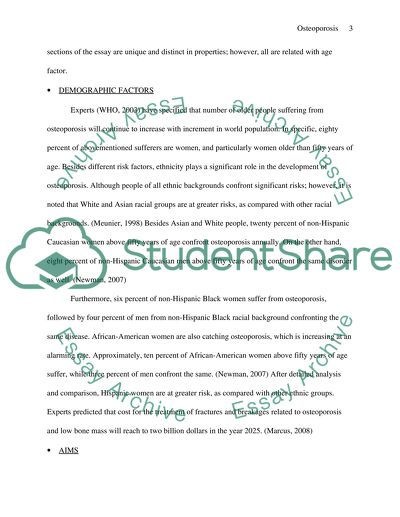Osteoporosis: Demographic Factors Essay Example | Topics and Well Written Essays - 250 words. Retrieved from https://studentshare.org/health-sciences-medicine/1554106-osteoporosis-demographic-factors
Osteoporosis: Demographic Factors Essay Example | Topics and Well Written Essays - 250 Words. https://studentshare.org/health-sciences-medicine/1554106-osteoporosis-demographic-factors.


